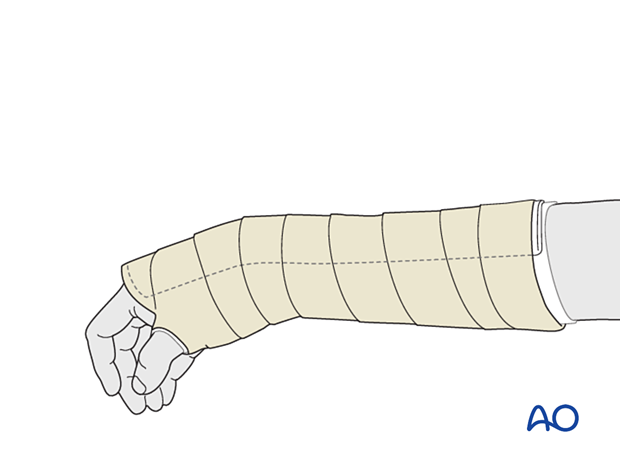ORIF - Screw fixation
1. General considerations
For the fixation of hamate hook fractures, mini-fragment screws (1.5 or 2.0 mm) may be used as a position screw.
Overdrilling for compression is often not possible due to the small fragment size. Headless compression screws are too big and, therefore, not an option to fix this fracture.
Hamate hook fractures may occasionally be associated with a palmar fracture of the trapezium in high-energy injuries as they are linked through the transverse carpal ligament.
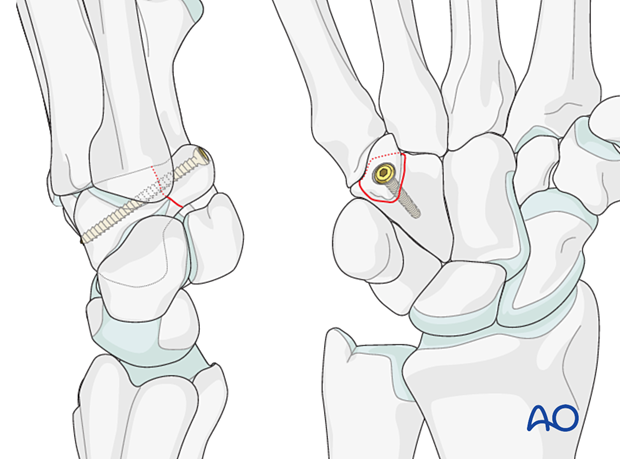
2. Patient preparation
The patient is usually supine with the arm on a radiolucent side table.
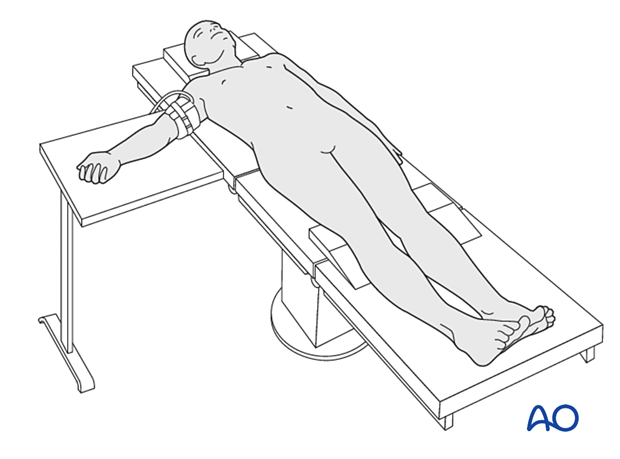
3. Approach
An ulnar approach gives access to the hamate hook.
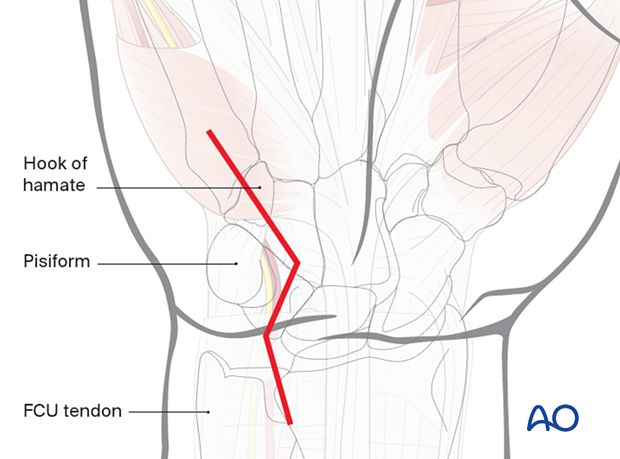
4. Reduction
If the fracture is displaced, reduce it with a hook and hold the reduction throughout the procedure.
In most cases, there is not enough room for temporary K-wire fixation.
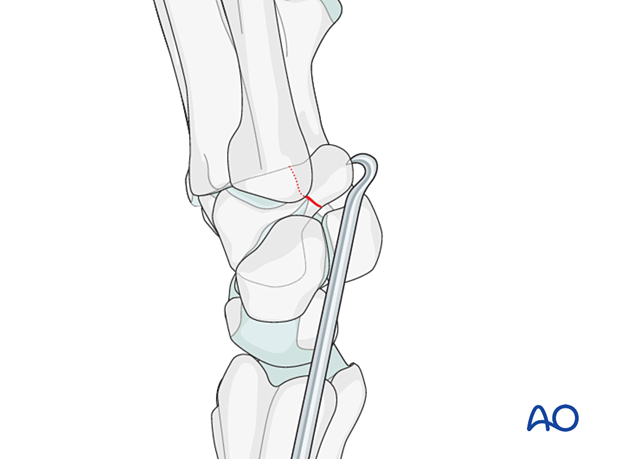
5. Screw fixation
Drilling
Use only the dedicated drill bit. A power drill will exert a smaller and more controlled force on the fragments than manual drilling and reduce the risk of displacing the fragment. A small power drill with slow rotation is preferable.
Use irrigation solution to cool the drill bit to minimize thermal injury.
Check the position of the tip of the drill bit using image intensification.
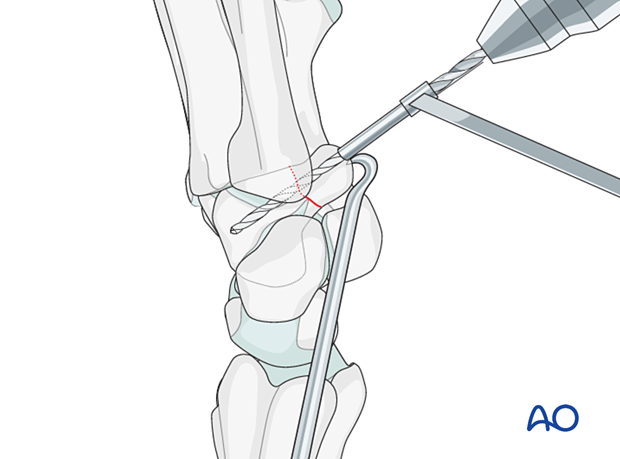
Measuring screw length
Determine the appropriate screw length with the dedicated measuring device.
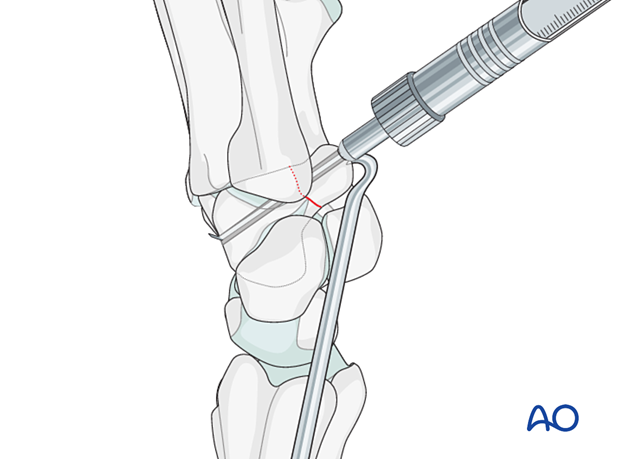
Screw insertion
Insert the screw manually and tighten it fully.
The use of a self-tapping screw is preferred.
Confirm reduction and screw position with an image intensifier.
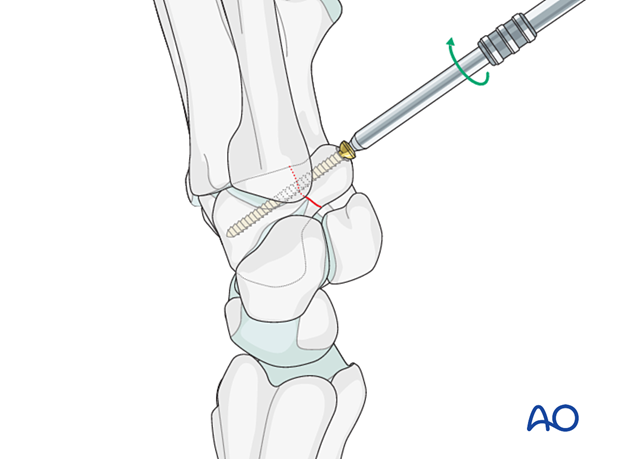
6. Aftercare
The aftercare can be divided into four phases of healing:
- Inflammatory phase (week 1–3)
- Early repair phase (week 4–6)
- Late repair and early tissue remodeling phase (week 7–12)
- Remodeling and reintegration phase (week 13 onwards)
Full details on each phase can be found here.
Pain control
To facilitate rehabilitation, it is important to control the postoperative pain adequately.
- Management of swelling
- Appropriate splintage
- Appropriate oral analgesia
- Careful consideration of peripheral nerve blockade
Immediate postoperative treatment
Rest the wrist with a well-padded below-elbow splint in slight flexion of the wrist for about 6 weeks.
Splinting helps with soft-tissue healing.
